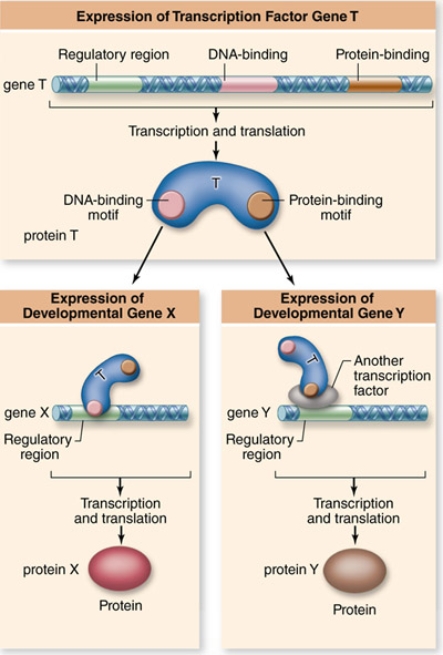Multiple Choice
 A mutation in the transcription factor protein shown, protein T, disrupts the function of its DNA-binding motif.The most likely result of this mutation would be that
A mutation in the transcription factor protein shown, protein T, disrupts the function of its DNA-binding motif.The most likely result of this mutation would be that
A) protein T can no longer directly interact with DNA, but it can still regulate gene expression through a second transcription factor.
B) protein T can no longer interact with other transcription factor proteins, but it can still regulate gene expression by directly binding to DNA.
C) protein T can no longer regulate gene expression.
D) protein T can still regulate gene expression by interacting directly with DNA regulatory regions.
Correct Answer:

Verified
Correct Answer:
Verified
Q4: Genes with similar sequences in two different
Q5: An alteration in the timing of a
Q6: A plant with its floral structures arranged
Q7: The development of eyes has been intensively
Q8: The evolution of petals through the AP3
Q10: The evolution of development of snout-length in
Q11: The evolution of flower symmetry is best
Q12: The Pax6 gene, responsible for initiating lens
Q13: The evolution of insect wing patterns is
Q14: <img src="https://d2lvgg3v3hfg70.cloudfront.net/TB7720/.jpg" alt=" (Note the phylogeny